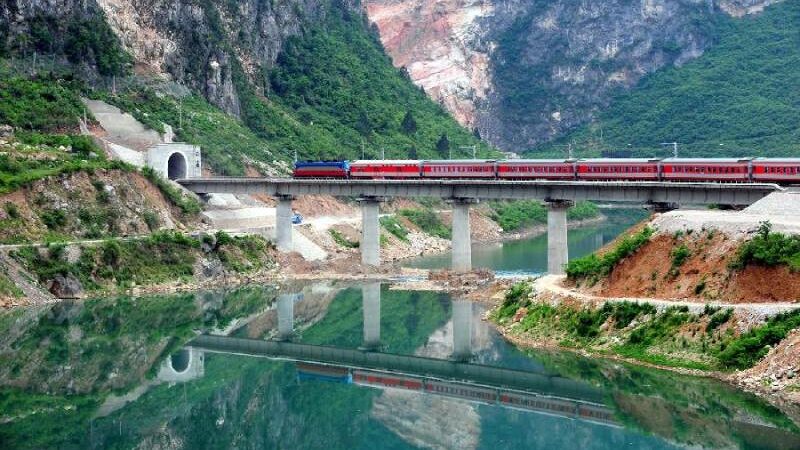According to Research and Markets, the global rail transportation market is valued at approximately $479 billion in 2023. The market is expected to grow at a compound annual growth rate (CAGR) of 4.7% and reach $692.2 billion by 2030. The passenger sector is expected to grow significantly at a compound annual growth rate of 5.3%. By the end of the analysis period, the value of the passenger segment could reach approximately $377.6 billion.
The United States ranks first among countries with the world’s largest rail network. The U.S. rail transportation market is valued at $110.1 billion in 2023. On the other hand, China, the world’s second largest economy, is expected to achieve significant growth, reaching $124.1 billion by 2030, at an average annual growth rate of 6.3%. Japan and Canada are expected to grow by about 3.6% and 4.5%, respectively, from 2023 to 2030. Japan is also considered to have one of the best railway systems in the world.
Look at the top 5 countries in the world for railway passenger traffic.
5. South Korea
Railways, passenger traffic (million passenger kilometers): 100,381
South Korea’s national railway services are primarily provided by KORAIL. South Korea’s public transportation system is known for its efficiency, ranking fifth in the world for rail passenger transport. The main route runs from Seoul southwest toward Mokpo and southeast toward Busan.
4. Russia
Railways, passenger traffic (million passenger kilometers): 103,447
Russian Railways is Russia’s state-owned railway company, managing infrastructure and operating freight and passenger train services throughout the country. Due to historical, economic and geographical reasons, Russia has the largest railway network in the world. Russia’s huge land mass is one of the main reasons for its extensive railway network. Russia ranks fourth in the list of countries with the highest number of rail passengers in the world.
3. India
Railways, Passengers traffic (million passenger-km): 231,126
Indian Railways is under the Ministry of Railways, Government of India, and is responsible for supervising India’s national railway system. Railways are widely used in India due to their relatively high fares compared to other modes of transportation.
2. Japan
Railways, passenger traffic (million passenger-km): 263,211
Approximately 70% of Japan’s railway network is operated by Japan Railways (JR). The remaining 30% is served by a number of private rail companies, especially in and around metropolitan areas. JR has a network of urban, regional, and interregional railways, including the Shinkansen. JR trains are known for their punctuality and speed. Trains can reach speeds of up to 320 km/h, allowing passengers to reach their destination quickly.
1. China
Railways, passenger traffic (million passenger-km): 946,499
Railway transport is one of the most important means of transportation in China, providing a wide range of railway services throughout China. China’s railway network is known worldwide for its sophistication and efficiency. High-speed trains run between cities at speeds of approximately 320 kilometers per hour. A large number of new lines will open towards the end of 2021, and China’s railway network will have a total length of over 150,000 km. The addition includes multiple high-speed lines and will help expand the high-speed network to more than 40,000 kilometers in length.
- Kendrick Lamar Releases ‘GNX’ a New Album Features SZA, Jack Antonoff and Kamasi Washington - November 23, 2024
- Google doodle celebrates the Brazilian rock composer and musician ‘Raul Seixas’ - November 23, 2024
- Mac Miller’s Long-Awaited Album ‘Balloonerism’ Drops Soon - November 22, 2024





